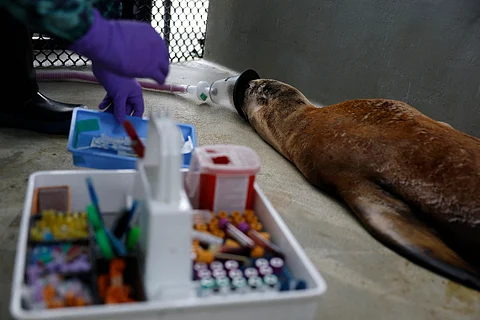
- NEWS
- the EDIT
- COMMENTARY
- BUSINESS
- LIFE
- SHOW
- ACTION
- GLOBAL GOALS
- SNAPS
- DYARYO TIRADA
- MORE

Every few years, veterinarians and marine scientists along the Pacific coast brace for an alarming pattern: a surge in sick California sea lions suffering from leptospirosis, a bacterial disease that strikes both wildlife and humans.
According to the Marine Mammal Center, a leading nonprofit marine mammal hospital and research facility, these outbreaks typically occur every four to five years and can overwhelm rescue efforts as stranded animals wash ashore in large numbers.
Leptospirosis is caused by the spiral-shaped bacteria Leptospira, which attacks the kidneys. In California sea lions, the disease is easy to recognize even before laboratory tests confirm it. Infected animals often display unusual behaviors such as drinking seawater and folding their flippers tightly across their abdomens — clear signs that their kidneys are no longer functioning properly.
“Marine mammals usually get all the hydration they need from the fish and squid they eat,” the Marine Mammal Center explained in its report. “But when their kidneys are compromised by Leptospira, they lose the ability to regulate fluids and toxins, which can quickly become fatal.”
Veterinarians treat sick sea lions with antibiotics, fluids, and medications to protect their digestive systems. Still, outcomes remain grim: roughly two-thirds of sea lions admitted with acute leptospirosis do not survive, even with intensive care.
Leptospirosis is not limited to marine life. The World Health Organization estimates that more than 500,000 severe cases occur in humans every year worldwide. In people, symptoms range from mild infection to severe illness, including organ failure and, in some cases, death. The disease also affects domestic animals such as dogs and livestock, making it a global public health concern.
Because sea lions are highly visible along the California coast, they serve as a critical warning system for scientists studying how the disease spreads in wildlife. The Marine Mammal Center’s decades-long database of stranding records, combined with stored blood and urine samples, provides researchers with rare insights into how the bacteria evolves and how outbreaks recur.
The first documented outbreak of leptospirosis in California sea lions dates back to 1970, when strandings were reported along the coasts of California, Oregon, and Washington. Since the 1980s, the Marine Mammal Center has observed seasonal outbreaks nearly every year, with major die-offs striking every four to five years.
The reasons behind these recurring spikes remain unclear. However, researchers at the University of California, Los Angeles, working with the Center, suggest that multiple factors may be at play — from shifting sea surface temperatures to changes in herd immunity and migration patterns.
“Leptospirosis is a natural part of the marine ecosystem, but we still don’t fully understand what drives these periodic mass outbreaks,” said the Center. “Each cycle gives us an opportunity to improve our knowledge and ultimately our ability to save more animals.”
For scientists, the plight of sick sea lions underscores the interconnectedness of human, animal, and environmental health. With leptospirosis posing risks across species, efforts to monitor and study its spread are critical not just for wildlife rescue, but also for protecting public health.
As the Marine Mammal Center continues its work, the recurring crises serve as both a challenge and an opportunity — a reminder that the health of the ocean’s inhabitants is deeply linked to the health of people on land.
